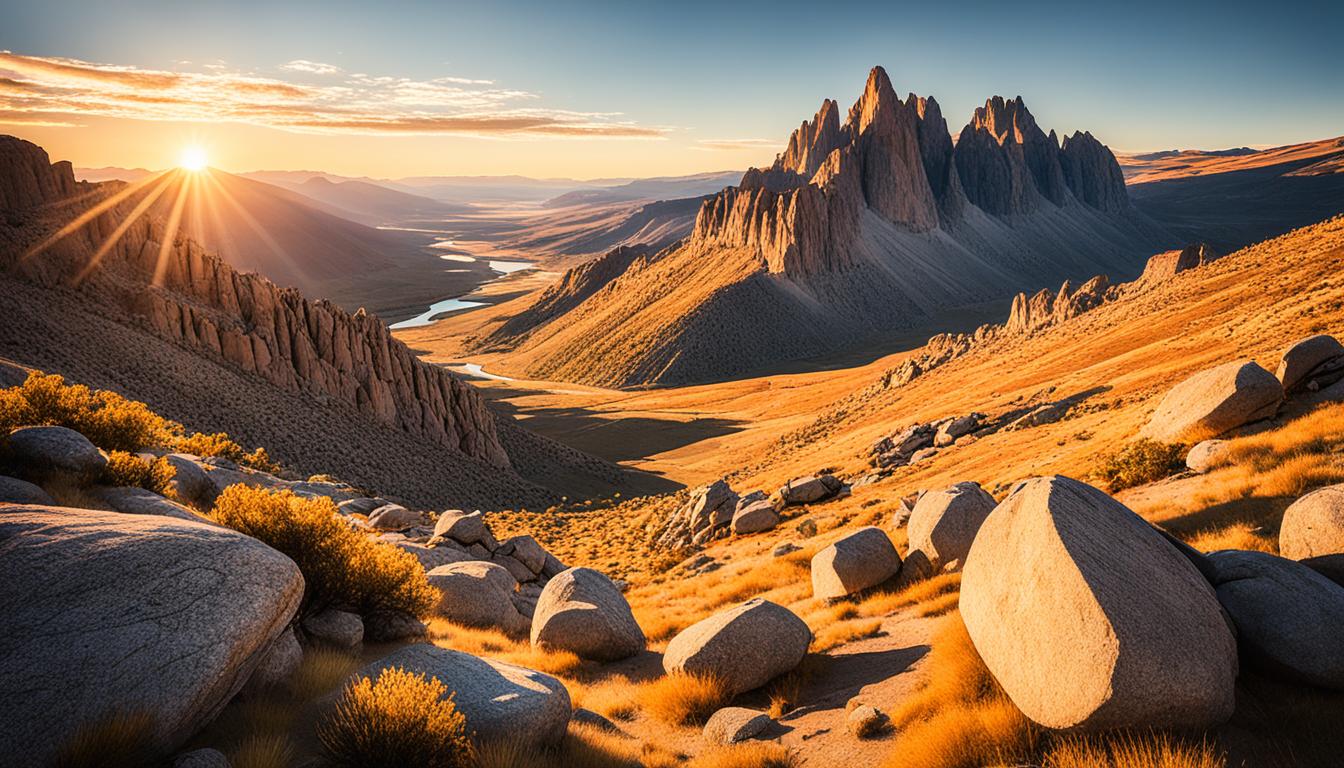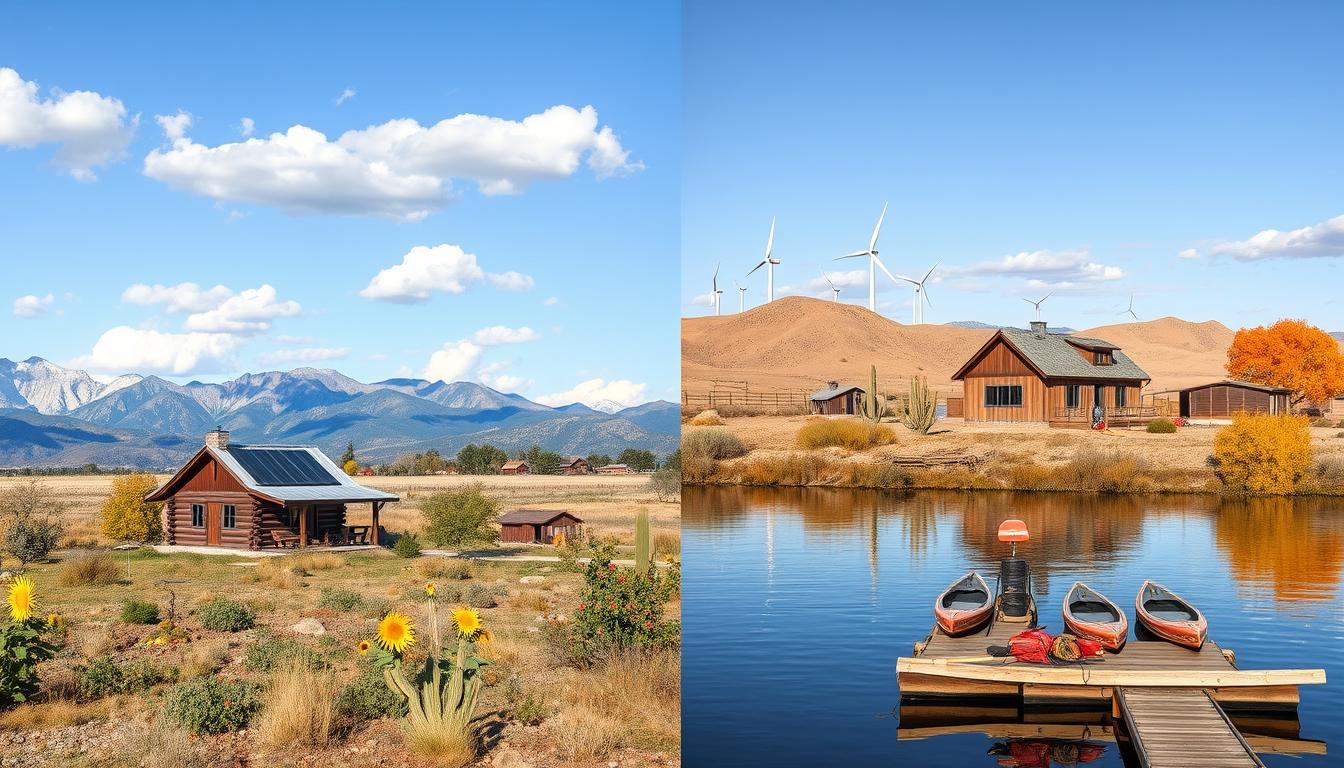In today’s world, we often use GPS and apps to find our way. But when we’re in the wild, having a backup plan is key. This plan should work even when there’s no battery or signal. Learning to navigate without a compass can make our outdoor adventures more meaningful and fun.
Key Takeaways
- Learn to navigate using natural landmarks, even without a compass
- Develop essential survival skills for staying safe in the wilderness
- Enhance your outdoor experience by gaining a deeper understanding of your surroundings
- Identify the sun, stars, and other natural features to determine direction
- Recognize the clues that trees, landforms, and water features can provide
The Importance of Navigation Skills
For those who love the outdoors, learning to navigate is key. It’s essential for hiking, camping, or any outdoor adventure. Knowing how to navigate without a compass keeps you safe and lets you enjoy the moment fully. You won’t need to always look at a map or device.
Staying Safe in the Wilderness
Being able to navigate using landmarks and the stars can save you in emergencies. These skills are vital for avoiding danger and ensuring a safe outdoor trip.
Enhancing the Outdoor Experience
Not worrying about where you are lets you enjoy the beauty of nature more. Navigating without a compass makes you more present and connected to your surroundings. This leads to a deeper bond with nature and a sense of achievement.
“Navigating without a compass is a fundamental skill that every outdoor enthusiast should strive to master. It not only keeps you safe in emergency situations but also enhances the overall experience of being in nature.”
Whether you’re seasoned or new to the outdoors, learning natural navigation is a big plus. It can turn your outdoor adventures into unforgettable moments.
Understanding Natural Landmarks
Learning to navigate without a compass means paying attention to the natural world around you. Natural landmarks and environmental cues can be great guides. They help you figure out where you are and where you’re going, even in unknown places.
Celestial bodies like the sun, moon, and stars are key natural landmarks. Watching how they move helps you know which way you’re facing. Hills, valleys, and ridges also give clues about your location and direction.
Vegetation patterns can be landmarks too. The way plants grow and the direction of their leaves or branches can show you where the wind comes from, where water is, and more. This can help with finding your way.
“The best navigation is done by looking at the natural world around you, not by relying on technology.”
Getting to know these natural landmarks and environmental cues is the first step in learning to navigate without a compass. By noticing the small signs and patterns around you, you can use the natural world to guide you.
Next, we’ll look at how to use the sun, stars, and other natural features for navigation. This will help you explore the outdoors with confidence, without needing modern technology.
Navigating by the Sun
Using the sun’s position is a reliable way to navigate. It helps you find directions without a compass. This method is great for outdoor adventures.
Finding East and West
Look at the sun to find east and west. At sunrise, it’s in the east, and at sunset, it’s in the west. This way, you can tell which direction you’re facing.
Determining North and South
Finding north and south is a bit tricky but doable. In the Northern Hemisphere, the sun moves from east to west, crossing the southern sky. To find north, just draw a line straight up from the sun’s path.
The sun’s position changes with the day and season. So, watch how it moves to get the right directions.

“The sun, with all those planets revolving around it and dependent on it, can still ripen a bunch of grapes as if it had nothing else in the universe to do.”
– Galileo Galilei
Learning to navigate with the sun lets you explore freely without fear of getting lost. With practice, you’ll easily find your way using the sun’s path.
Navigating Without a Compass
Being in the wilderness without a compass can be tough. But, there are ways to find your way without it. You can use different methods to stay on track.
Using natural landmarks is a good way to navigate. Look at the sun’s position, the moss on trees, and the shapes of hills. These can help you figure out which direction you’re going. This method has been used by many for a long time.
Another way is to use the sky. Find the North Star to know which way is north. Watching the sun move can also tell you where east and west are. This works even when it’s cloudy.
In forests, trees can be your guides. Check where moss grows or how tree trunks lean. This can show you the directions you need to go.
Learning these alternative navigation methods is useful. It keeps you on the right path and makes your outdoor adventures better. It connects you more with nature and prepares you for surprises.
Using Trees as Landmarks
When you’re out in nature, the trees around you can be key to finding your way. They offer clues about your direction and where you are. By noticing how trees grow and their special features, you can better understand your surroundings.
Recognizing Moss Patterns
Moss on tree trunks is a great way to figure out which way is north. It loves the cool, damp spots on the north side of trees. So, by looking at the moss, you can tell which direction you’re facing.
Moss often grows more abundantly on the north-facing side of trees, providing a natural compass.
- Look for areas of the tree trunk where moss is most concentrated.
- The side with the densest moss growth is typically the north-facing direction.
- Use this information to orient yourself and determine the other cardinal directions.
Other things about trees can also help you navigate, like how branches grow or where knots are. Paying attention to these details can make you better at using trees to find your way. This way, you can move through the wilderness with more confidence.
Navigating by Landforms
When you’re out in nature, knowing how to navigate the terrain is key. By noticing the natural landmarks, you can keep your direction without just using a compass. Landforms like hills, valleys, and ridges are great for finding your way.
Hills, Valleys, and Ridges
Hills, valleys, and ridges can be your guides. They tell you where you are and where you’re going. For instance, going uphill means you’re moving away from the valley. Walking on a ridge helps you stay on course to your goal.
Noticing the land’s shape and height can also tell you what’s ahead. This is very useful in rough or uneven areas. It lets you plan your path and dodge dangers.
“Navigating by landforms is a time-honored technique that has helped countless adventurers find their way in the wilderness.”
Whether you’re hiking, camping, or discovering new places, learning about landforms and how to use them for terrain navigation makes your outdoor adventures better. It keeps you safe and on the right path.

Utilizing Water Features
Water sources like rivers, lakes, and streams are key for natural navigation. They help you figure out where you are and where you’re going, even without a compass. This part will show you how to use these water features to navigate well in the outdoors.
Understanding the flow of water is crucial. Rivers and streams usually flow downhill. So, following them helps you know which direction is downstream or upstream. This is very useful for finding your way back to where you started or your campsite.
Lakes and ponds also offer clues about your surroundings. Look for landmarks like inlets, outlets, and shoreline shapes. These can tell you where you are in relation to the water. This helps you get your bearings and plan your next move.
When using water for navigation, watch out for dangers like rapids, waterfalls, or slippery banks. Take time to observe the water and its surroundings before moving on. Always put your safety first when navigating with water.
Learning how to navigate with water makes you more confident in exploring the outdoors without a compass. Whether you’re walking by a river or along a lake’s shore, these natural signs can lead you to where you need to go.
Staying on Course with Star Navigation
When night falls and the sun’s warmth fades, the stars light our way. Star navigation is a skill that helps us stay on track, even in tough conditions. At its core, this method relies on the North Star, a steady guide for those lost in the wild.
Identifying the North Star
The North Star, or Polaris, is a natural wonder. It stays put in the northern sky, making it a reliable landmark. To find it, look for the Big Dipper constellation and follow its two end stars up. This will point you straight to the North Star, your guide in the night sky.
Once you spot the North Star, it helps you figure out which way you’re going. By lining up with it, you can easily find north, south, east, and west. This keeps you on the right path during your travels.
“The stars are the lanterns of the sky, guiding us through the darkness and keeping us on course.”
Learning to navigate by the stars gives us confidence to explore the wilderness at night. By getting to know the North Star and other stars, we can move through the outdoors with ease. This opens up the beauty and wonder of nature to us.
Conclusion
This article has shown many ways to navigate without a compass. It talked about using natural landmarks, environmental clues, and the stars. These skills make outdoor adventures better, keep you safe in the wild, and boost your confidence in finding your way.
It covered how to use the sun and the North Star. It also explained how to spot moss on trees and recognize land shapes. This guide gives a full picture of navigating without a compass. These skills are useful for hiking, camping, and exploring the wilderness.
If you love adventure or are new to the outdoors, this article will help you navigate with ease. It will make your outdoor experiences better and deepen your connection with nature. With these natural navigation methods, you’ll be ready for any adventure that comes your way.







